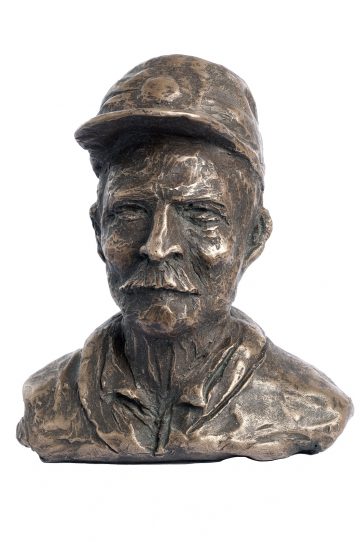Hugues AUFRAY 1929
Hugues Aufray was born in Neuilly-sur-Seine in 1929. Author, composer, musician and singer, he was spotted by Eddie Barclay in 1959. His first album marked the start of a long career, with hits such as Céline, Santiano and Stewball. His songs, which sometimes take a stand against racism and intolerance, are about travel, friendship, fraternity and respect. He has translated many of Bob Dylan’s songs, making Dylan famous in France. He is also the author of Johnny Hallyday’s song Le pénitencier. An admirer of Aristide Maillol and Paul Gauguin, his first ambition was to become a visual artist, but his father did not approve. It was after Aristide Maillol’s muse, Diane Vierny, told him that “it’s never too late to become a sculptor” that Hugues Aufray decided, at the age of 80, to produce his own work. His sculptures represent the characters in his Pantheon.
In 2020, he presented his latest album, Autoportrait. His sculptures were presented in 2013 at an exhibition at the Musée Maillol in Banyuls-Sur-Mer. His first bronze, Hommage à Bob Dylan, was exhibited at the Cité de la Musique in Paris in 2012, as part of an exhibition devoted to the American artist.
Buste du Facteur Cheval 2011
Buste du Facteur Cheval, from the Palais idéal collection, was donated by the artist after his concert on the site in 2012. Made of polymer, the small sculpture depicts Postman Cheval in a realistic style. Wearing a full moustache and a kepi pulled down over his head, he has drawn features and a serene gaze. The work, which is faithful to the well-known depiction of the postman, reveals a certain dexterity on the part of the artist, particularly in the details such as the wrinkles on the neck and the hollows of the eyes. A golden patina illuminates the sculpture in places. The artist is no stranger to the Rhône-Alpes region, which is home to the Palais, since he owns a farm at Orgnac l’Aven in the Ardèche. As for his recent work as a sculptor, he says: “I now devote as much time as possible to sculpture, which I approach like Ferdinand Cheval, as a self-taught artist”.

